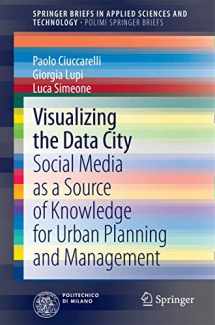
Visualizing the Data City: Social Media as a Source of Knowledge for Urban Planning and Management (SpringerBriefs in Applied Sciences and Technology)
Book details
Summary
Description
This book investigates novel methods and technologies for the collection, analysis and representation of real-time user-generated data at the urban scale in order to explore potential scenarios for more participatory design, planning and management processes. For this purpose, the authors present a set of experiments conducted in collaboration with urban stakeholders at various levels (including citizens, city administrators, urban planners, local industries and NGOs) in Milan and New York in 2012. It is examined whether geo-tagged and user-generated content can be of value in the creation of meaningful, real-time indicators of urban quality, as it is perceived and communicated by the citizens. The meanings that people attach to places are also explored to discover what such an urban semantic layer looks like and how it unfolds over time. As a conclusion, recommendations are proposed for the exploitation of user-generated content in order to answer hitherto unsolved urban questions. Readers will find in this book a fascinating exploration of techniques for mining the social web that can be applied to procure user-generated content as a means of investigating urban dynamics.


We would LOVE it if you could help us and other readers by reviewing the book
Book review



